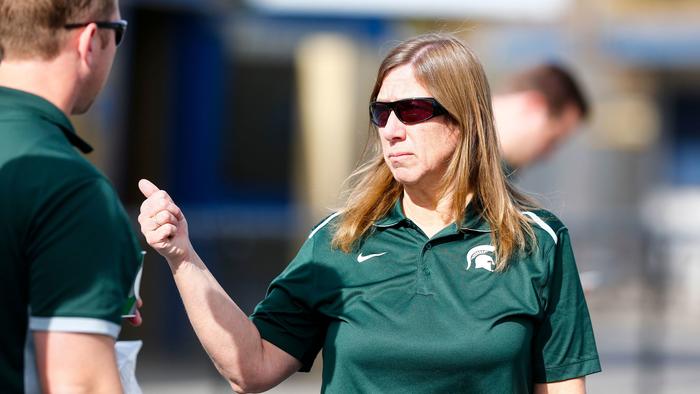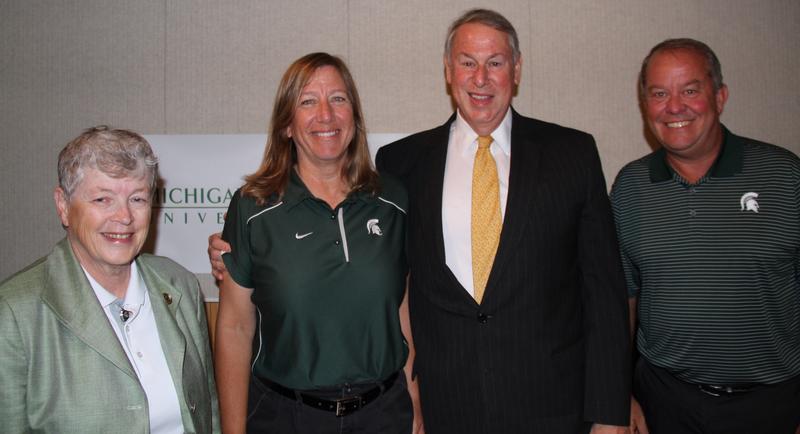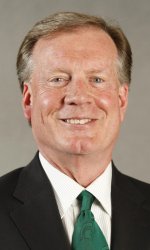
Article reposted from The San Diego Union Tribune
Author: Tod Leonard
Sally Nogle was a college student in the Athletic Training Program at San Diego State when she got her first taste of working the sidelines for the Holiday Bowl.
The years were 1980 and ’81, and Nogle was a trainer liaison for BYU for its two thrilling wins — 46-45 over SMU and 38-36 over Washington State. Those games put the Holiday Bowl on the must-watch list for fans.
“It was a cool bowl game,” Nogle said. “When I went on to Michigan State, I thought maybe someday we’d get back there.”
It only took 34 years.
Nogle, a Bay Area native, will finally return to the sidelines of SDCCU Stadium (it was Jack Murphy Stadium back in her time), with Michigan State taking on Washington State on Thursday in the 40th Holiday Bowl.
Nogle began her athletic training career in 1983 with the Spartans and has never left East Lansing, Mich. In 2013, she became the first female in the Big Ten Conference to be the head trainer for the entire athletic program and for football.
Nogle is here this week with her husband, Carlton, who also is a San Diego State grad, and she joked that they’ve walked around in the sunshine and said, “Why did we ever leave?”
She did so to have a career that has distinguished Nogle as one of the top people in her field. She’s won numerous national awards and in 2012 was inducted into the National Athletic Trainers’ Association Hall of Fame.
In 2008, Nogle was honored with San Diego State’s Robert J. Moore Distinguished Alumnus Award. It was Moore who began SDSU’s Athletic Training Program in 1968, and he emphasized getting more women into the field.
SDSU’s program has produced more than 1,300 trainers, men and women, in nearly 50 years.
Moore, who died in 2012, was among the first trainers in the country to promote and use Proprioceptive Neuromuscular Facilitation (PNF) — an advanced form of stretching for athletes.
“A brilliant man,” Nogle said. “I got lucky to have been in the program there. When I left, I realized how much of an incredible mentor he was.”
Nogle, who did her undergraduate studies at SDSU in 1975-79 and graduate work from 1980-83, said she also was influenced by Carolyn Greer, a product of SDSU’s training program who became the first female head athletic trainer in Division I when she was hired by the University of San Diego in 1978.
Women now make up about 50 percent of all trainers outside of college athletics, Nogle said, but there are only a handful who are head trainers or lead football trainers in the Power Five conferences.
“In college football, it’s a male-dominated world, and we don’t play football,” Nogle said. “It’s not an easy job, either, in terms of lifestyle and balancing a family, and that comes into play.”
Nogle laughed when asked if a female football trainer can do the same job as a man.
“There’s no reason we can’t,” she said. “If you’re interested in a sport, you can learn by watching it. I just need to learn the movement, and the dynamics of what certain athletes need to do.”
Times have changed in the training world as football faces bigger scrutiny than ever over injuries, and concussions in particular.
“I think we’re better than we were in the past,” Nogle said. “The concussion issue, we understand it better, and we treat the athletes better. That’s important.
“I happen to work for a great coach (Mark Dantonio), who if I say an athlete has a concussion, he doesn’t challenge it. I hope there are a lot of coaches out there who do that, but I think for some athletic trainers it’s harder. Sometimes coaches will put pressure on to get a person back.
“You have to be strong, and it’s stressful. You want to win, too. But you have to do what’s best for the athlete.”
Nogle’s hours haven’t gotten any easier. She still works a ton of them, and probably more than ever, with her dual roles in football and the athletic department.
“It’s stressful at times, but I like it a lot,” Nogle said. “Being the head athletic trainer, you get to establish polices and get the culture of the program where you want it to be. Being able to do that as the head person, that’s part of the fun.”

